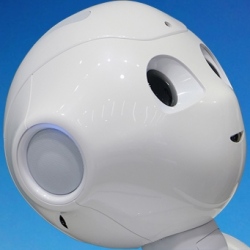
Humans only live aboard the ISS for a few months, maybe a year. Robots don’t need food or water or comfort, and can work on the station for as long as need be. Useful! And they’ll be even more useful with a new method of memory storage that can store years of information.
With this new memory storage system, developed by a team at the French Institute of Health and Medical Research, our mechanical workhorses will know exactly how to do the tasks humans expect of them. They won’t have to relearn them the way each new batch of astronauts needs to learn how to live in space. The team calls it “autobiographical memory.”
It doesn’t even have to be limited to ISS chores, it can include general knowledge humans have learned while in space. According to the press release: “The robot, which is the only permanent member, would liaise between the different crews that change every six months in order to pass on information.” The system’s still being tested here on Earth, but in space, humans could use voice commands, Kinect, and physical interaction with the robot to both tell and show it what it what needs to be relayed to the next batch of humans. How to repair a smart card in a certain situation, say. It’s practical tech, considering Robonaut 2 is already an ISS mainstay.
The actual physical robot used for development already exists: It was the popular highly teachable Nao robot, one of the smartest humanoids on the market. Nao was developed by French company Aldebaran Robotics, the same company that developed Japanese telecom giant SoftBank’s Pepper robot, the emotion-reading robot that sold out of 1,000 units in one minute this summer.
It’s only a matter of time before robot-human interaction like this will arrive on the ISS. Tomotaka Takahashi’s Kirobo robot already became the first talking robot to be launched into space, and interacted with astronauts aboard. Maybe entrusting robots with valuable information in space can inspire humans to trust them more here on Earth.
